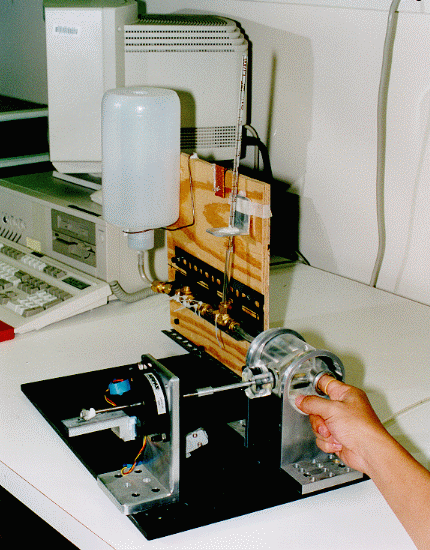The first step in performing mechanistic analyses of the primate fingertip
is to determine its geometric and material properties. The three dimensional
(3D) external geometry of the primate fingertips was determined from accurate
epoxy replicas of human and monkey fingertips. Using a videomicroscopy setup
we obtained images of orthographic projections of the epoxy replicas at
various known orientations. The images were then digitized and processed
to determine the boundary of the finger at each orientation. By combining
the boundary data for all the different orientations, we were able to reconstruct
the 3D external geometry of the fingertip (Perez, Dandekar and Srinivasan,
1992). We have reconstructed several human and monkey fingertips by using
this method.

For mechanistic modeling of the human fingerpad, the Poisson's ratio, which
is a measure of its compressibility, is required as an input to the mathematical
models. The Poisson's ratio for the human fingerpad in vivo is unknown at
present. In previous noninvasive experiments on human subjects, we have
measured the change in volume of the fingerpad under static indentations
with different indentors (Srinivasan, Gulati and Dandekar, 1992). Our results
show that the compressibility of the fingertip increases with increases
in both the depth of indentation and the contact area with the indentor.
The highest change in fingertip volume was about 5%. We have also developed
an experimental setup involving a computer controlled linear actuator for
fingertip volume change measurements under dynamic conditions (Babiec, 1994).
The results show that reductions in fingertip volume are in phase with stimulus
variations, with an increase in their mean value over time. The volume changes
during the ramp phase increase linearly with indentor displacement and are
independent of velocity; during saw tooth stimulations, however, the nature
of the hysteresis loops depend on velocity of indentation.
|
Click on the following links to read more in specific areas.
|
|


